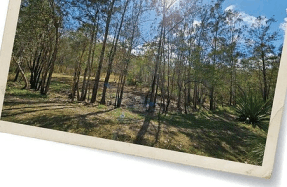Permaculture design PLANNING YOUR PLACE


Turning a challenging piece of land into a productive permaculture patch doesn’t need to be as daunting or as difficult as you might think. Successful design starts with providing honest answers to the right questions.
Michelle and her two kids live in the northern suburbs of nipaluna/Hobart on a 750 m² urban property. Chosen for its low-maintenance house and the relatively large land size, other would-be owners saw overgrown lawn and a steep slope, but Michelle saw her future edible landscape.
As a passionate gardener striving for a productive patch, Michelle wasn’t interested in just popping in a garden bed here and there, she wanted to completely transform the property. We worked with Michelle to first understand what she wanted and how we could realistically achieve it given her challenging urban block, before turning it into a waterpreserving, soul-nourishing and nutrient-dense foodscape.
DREAMS AND VISION
When designing your property, you need to be really honest
You’re reading a preview, subscribe to read more.
Start your free 30 days





